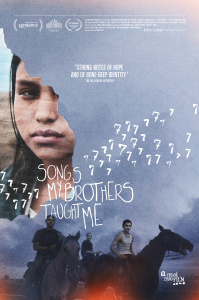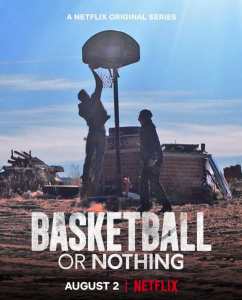As we dove into Module 2 we were tasked with thinking about how the media contributes to the stereotypes that exist about Indigenous people and communities. For this post I attempted to find a few representations of the Indigenous experience, represented through film that were “accurate.” Research on who critiqued these representations was crucial to ensuring the “wannabes” described by Zimmerman et al. (2000) didn’t make the cut. Though not all of these pieces of media may not be suitable for all grade levels, they could act as a starting point for settler educators when attempting to learn more about Indigenous cultures, traditions and livelihoods prior to classroom discussions.
Indian Horse (2017)

Description from Rice (2020): “This film is about a young Canadian First Nations boy who becomes a champion hockey player, but truly it’s about his experience using hockey as an escape from the boarding schools. If you haven’t heard about boarding schools, known at the time as Indian residential schools, and how they were created to strip Natives of our culture, the film might be shocking to you. Watching it as a Native woman was difficult, mostly because I have heard many elders speak quietly of these times, and of the pain they endured. It’s an emotional film, to be sure.”
Songs My Brother Taught Me (2015)

Description from Rice (2020): “Written and directed by Chloé Zhao, Songs My Brothers Taught Me showcases the harsh realities Native families face on the reservation. It follows the lives and relationship of two siblings living on Pine Ridge in South Dakota. Living as a Native in a postcolonial world is about survival, and this film captures the emotions and the pains many of us go through who live and survive on reservations today.”
Gather (2020)

Description from Rice (2020): “Sanjay Rawal’s new documentary follows Indigenous people as they reclaim traditional foods and put into practice their sovereignty. Being in control over one’s traditional foods and ways of eating and living is a practice that is slowly coming back to our peoples. This film showcases the journey of several Native peoples as they journey down that road of reclamation.”
Basketball or Nothing (2019)

Description from Rice (2020): “This Netflix docuseries follows the Chinle High School basketball team on the Navajo Nation in Arizona. Basketball is a huge sport in Indian Country, and I remember when this series first came out, how all my Navajo friends felt seen! Natives across most of the U.S. follow the basketball scene very closely, and this series specifically focuses on the Native side of the sport.”
Reference:
Rice, C. (2020, November 16). 8 Essential Films of the Native American Experience. AARP. https://www.aarp.org/entertainment/movies-for-grownups/info-2020/native-american-films.html
Zimmerman, L. J., Zimmerman, K. P., & Bruguier, L. R. (2000). Cyberspace Smoke Signals: New Technologies and Native American Ethnicity. In Indigenous Cultures in an Interconnected World (pp. 69–86). Routledge.




